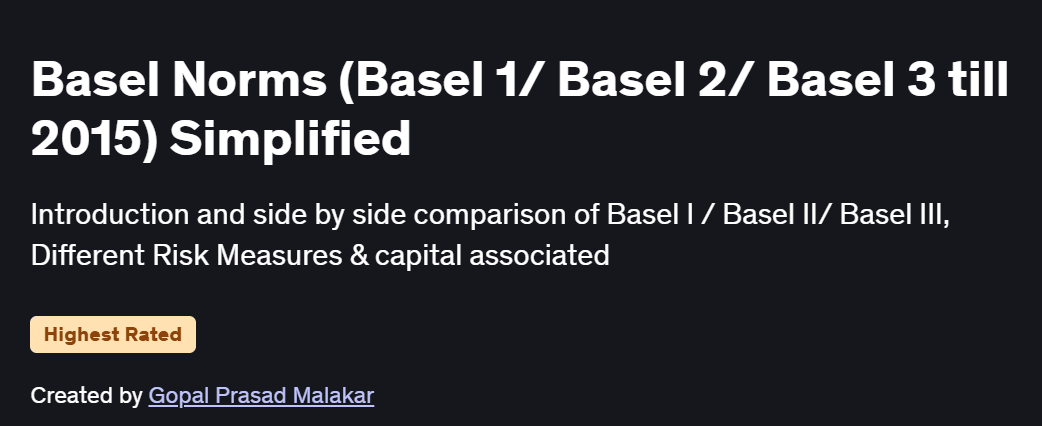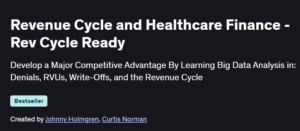What will you in Basel Norms (Basel 1/ Basel 2/ Basel 3 till 2015) Simplified Course
Understand the evolution and purpose of Basel I, II, and III frameworks.
Learn the necessity, advantages, and shortcomings of each Basel framework.
Compare the approaches to credit, operational, and market risk across the Basel frameworks.
Grasp key concepts like Capital Adequacy Ratio (CAR), Risk-Weighted Assets (RWA), and Tier 1/Tier 2 capital.
Apply these concepts to real-world banking scenarios.
Program Overview
Module 1: Introduction to Basel Accords
Overview of the Basel Committee and its role in banking supervision.
Historical context and the need for standardized banking regulations.
Introduction to the three pillars of Basel norms.
Module 2: Basel I – The Foundation
Capital Adequacy Ratio (CAR) and its significance.
Risk-weighting of assets and the 8% capital requirement.
Limitations of Basel I and its impact on global banking.
Module 3: Basel II – Enhancements and Challenges
Introduction of the three pillars: Minimum Capital Requirements, Supervisory Review, and Market Discipline.
Advanced approaches to credit, market, and operational risk.
Limitations and criticisms of Basel II.
Module 4: Basel III – Strengthening the Framework
Enhanced capital requirements and liquidity standards.
Introduction of the Liquidity Coverage Ratio (LCR) and Net Stable Funding Ratio (NSFR).
Impact of Basel III on global banking stability.
Module 5: Real-World Applications
Case studies of banks implementing Basel norms.
Challenges faced during implementation.
Lessons learned and best practices.
Get certificate
Job Outlook
- Professionals with knowledge of Basel norms are in demand in financial institutions, regulatory bodies, and consulting firms.
- Roles such as Risk Analyst, Compliance Officer, and Financial Auditor require understanding of Basel frameworks.
- The global focus on financial stability ensures continued relevance of Basel norms in the banking sector.
Specification: Basel Norms (Basel 1/ Basel 2/ Basel 3 till 2015) Simplified
|





